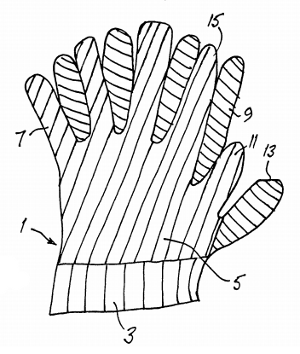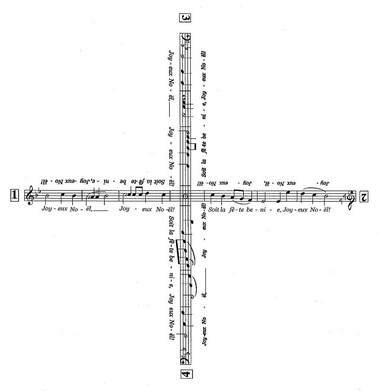lubberwort
n. food that makes one idle and stupid, food of no nutritive value, junk food
Author: Greg Ross
No Answer
Helen Fouché Gaines’ 1956 textbook Cryptanalysis: A Study of Ciphers and Their Solution concludes with a cipher that, she says, “nobody has ever been able to decrypt”:
VQBUP PVSPG GFPNU EDOKD XHEWT IYCLK XRZAP VUFSA WEMUX GPNIV QJMNJ JNIZY KBPNF RRHTB WWNUQ JAJGJ FHADQ LQMFL XRGGW UGWVZ GKFBC MPXKE KQCQQ LBODO QJVEL.
It was still unsolved in 1968, when Dmitri Borgmann, editor of the Journal of Recreational Linguistics, urged his readers to tackle the problem: “Are you going to let this challenge lie there, taunting you for the rest of your lives? Or are you going to get busy and solve that pesky little crypt?”
As far as I can tell, they let it lie there, and it remains unsolved to this day. Any ideas? There are few clues in Gaines’ book. The cipher is the last in a series of exercises at the end of a chapter titled “Investigating the Unknown Cipher,” and she gives no hint as to its source. Of the exercises, she writes, “there is none in which the system may not be learned through analysis, unless perhaps the final unnumbered cryptogram.” The solution says simply “Unsolved.”
Togetherness

This is romantic — in 1990 Terence King patented a pair of gloves connected at the palms, “so as to allow a courting couple palm contact inside the glove whilst their fingers and thumbs remain covered.”
“It may also be so sized as to accommodate and fit the respective hands of a mother and child.”
Noteworthy

The nephew of British composer George Lloyd discovered this among his papers — a Christmas carol written as a “tabletop double canon” that can be read simultaneously by singers facing north, south, east, and west.
A printable PDF is available here.
(Thanks, Steve and Bill.)
Rimshot
A man meets a friend whom he hasn’t seen in 20 years. “You look fantastic!” he says. “How do you stay so fit?”
The friend says, “I have one rule. I don’t argue with people.”
The man says, “Come on! How could that account for it?”
The friend says, “You’re right, that couldn’t possibly account for it.”
The L-8 Mystery

At 6:03 on the morning of Aug. 16, 1942, U.S. Navy blimp L-8 ascended from Treasure Island in San Francisco Bay to conduct an anti-submarine patrol along the coast of California. Aboard were pilot Ernest Cody and ensign Charles Adams. The flight proceeded uneventfully until 7:42, when Cody reported that they’d spotted an oil slick and were going to investigate.
At 11:15, caddies at a seaside golf club saw the airship float in from the sea, its motors silent. Descending, it struck some telephone lines and the roofs of several homes before coming to rest in Daly City. The first person to reach the downed ship, volunteer fireman William Morris, was surprised at what he found: “The doors were open and nobody was in the cabin.”
There was no trace of Cody or Adams. Though most of the fuel had been dumped, the parachutes and life raft were stored appropriately, and the radio was in working order. Only the crew were missing.
After a search, the Navy declared itself certain that “the men were NOT in the ship at any time it traveled over land.” Two fishing vessels near the oil slick testified that they’d seen the blimp descend to investigate, but nothing had fallen or dropped from it.
That’s all. A Coast Guard search found nothing. Cody and Adams were both declared missing, then pronounced dead a year later. No one knows what became of them.
Mind the Gap
For the Festival of World Cultures in August 2008, street painter Edgar Mueller transformed the East Pier in Dún Laoghaire, Ireland, into an ice-age crevasse.
“Beside the personal messages, questions and sometimes answers in my paintings I’m questioning the experienced daily perception of people by changing the appearance of public places,” he says.
Misc
- A pound of dimes has the same value as a pound of quarters.
- The French word hétérogénéité has five accents.
- 32768 = (3 – 2 + 7)6 / 8
- Can you deceive yourself deliberately?
- “My country is the world, and my religion is to do good.” — Thomas Paine
In 2000, Guatemalan police asked Christmas revelers not to fire pistols into the air. “Lots of people die when bullets fall on their heads,” National Civilian Police spokesman Faustino Sanchez told Reuters. He said that five to ten Guatemalans are killed or injured each Christmas by falling bullets.
Divine Guidance
Letters to the Times, March 1976:
From the Reverend E.H.W. Crusha:
May I enlist your support in restraining the use of ‘Dear Reverend’ and ‘Dear Reverend So-and-so’ in letters to clergymen? It appears to be increasing among people of standing and education who might be expected to be readers of The Times.
From Peter du Sautoy, chairman, Faber and Faber Ltd.:
I learnt from T.S. Eliot, the politest of men, that letters to clergymen one does not know personally should begin ‘Reverend Sir.’
From Peter Faulks:
I remember being told by a clergyman that when in India a parishioner wrote to him as ‘Reverend and Bombastic Sir.’
From Canon Allan Shaw:
There are degrees of reverence. When I was a Dean and very reverend I once received a letter addressed to ‘The Very Shaw’. I thought that took some beating. However, it was bettered by the present Bishop of Lincoln. He once told me that he had received a letter directed to ‘The Right Phipps.’
From Rabbi David J. Goldberg:
While Christian clergymen ponder their correct form of address, they might also spare a thought for the difficulty experienced by their Jewish colleagues. On several occasions (and usually from the Inland Revenue) I have received letters which address me as ‘Dear Rabbit’.
From the Rev. D.F.C. Hawkins:
A young member of my congregation in Nigeria once addressed me in a letter as ‘My dear interminable Canon’. I try to believe he intended it kindly.
To be fair, it’s hard to teach a computer to produce the correct salutation by interpreting the first line of an address. One programmer sent the contents of a test database of challenging addressees: Danie Van Der Merwe, The Master of Ballantrae, The Mistress of Girton, C.M. Gomez de Costa e Silva, Mrs. Mark Phillips, Earl Mountbatten, Count Basie, Sir Archie McIan of that Ilk, Adm. Hon Sir R.A.R. Plunkett-E-E-Drax, J. Smith Esq, Sister Mary-Paul, A. d’Ungrois, the Revd Dewing. He declared himself “confident of the continuing superiority of that product of unskilled labour, the human mind, over its most marvellous artifact.”
The War Prayer

In 1905 Mark Twain wrote a story in which a pastor leads a prayer asking God’s support for recruits about to march away to war. A white-robed stranger enters, takes the pastor’s place, and explains that he has come from heaven. God has heard the prayer, but wants them to understand its full import. Their wish, cast in other words, is this:
Lord our Father, our young patriots, idols of our hearts, go forth into battle — be Thou near them! With them — in spirit — we also go forth from the sweet peace of our beloved firesides to smite the foe. O Lord our God, help us tear their soldiers to bloody shreds with our shells; help us to cover their smiling fields with the pale forms of their patriot dead; help us to drown the thunder of the guns with the shrieks of their wounded, writhing in pain; help us to lay waste their humble homes with a hurricane of fire; help us to wring the hearts of their unoffending widows with unavailing grief; help us to turn them out roofless with their little children to wander unfriended in the wastes of their desolated land in rags and hunger and thirst, sports of the sun flames in summer and the icy winds of winter, broken in spirit, worn with travail, imploring thee for the refuge of the grave and denied it —
For our sakes who adore Thee, Lord, blast their hopes, blight their lives, protract their bitter pilgrimage, make heavy their steps, water their way with their tears, stain the white snow with the blood of their wounded feet!
We ask it, in the spirit of love, of Him Who is the Source of Love, and Who is the ever-faithful refuge and friend of all that are sore beset and seek His aid with humble and contrite hearts. Amen.
Twain’s daughter Jean urged him not to publish the story, fearing that it would be seen as sacrilege.
“Still, you are going to publish it, are you not?” asked a friend.
“No,” Twain said after some reflection. “I have told the whole truth in that, and only dead men can tell the truth in this world. It can be published after I am dead.”
